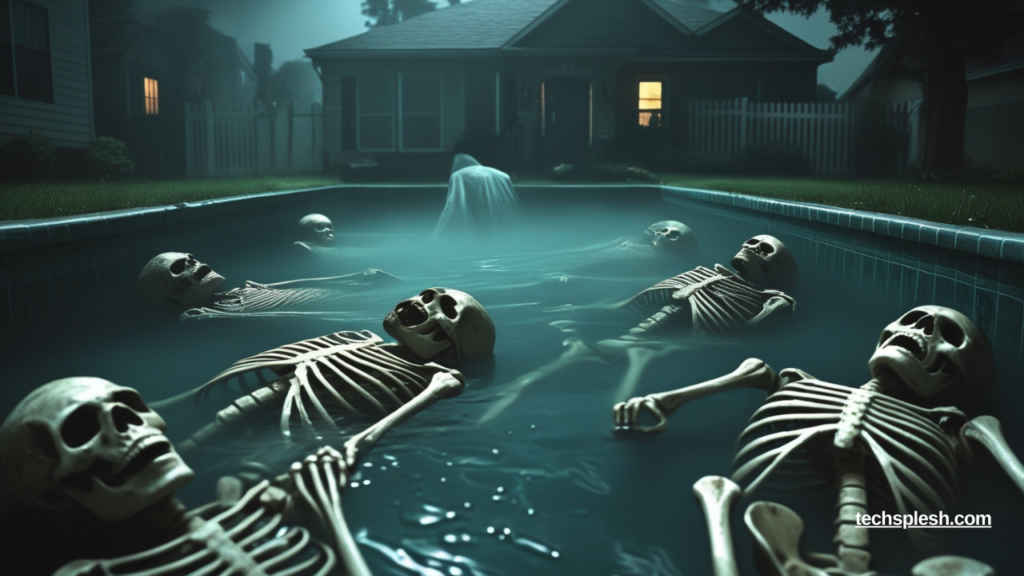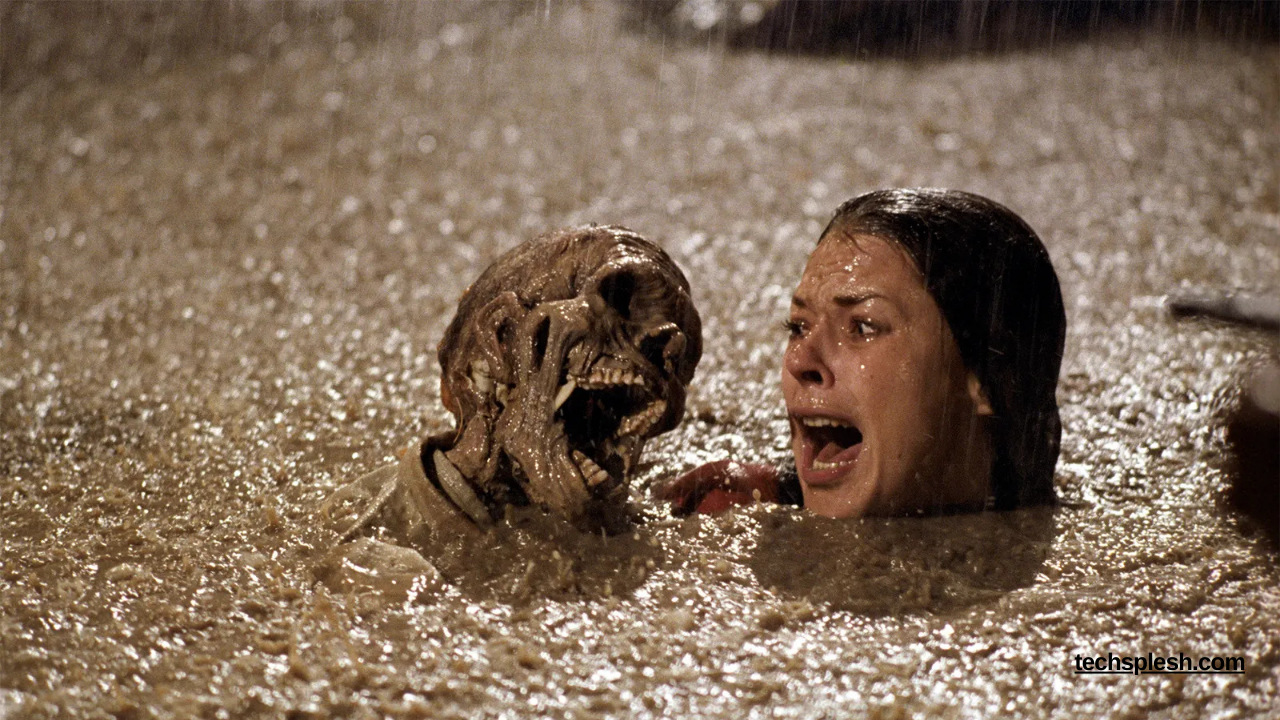The 1982 horror classic Poltergeist is famous for its terrifying moments and eerie behind-the-scenes stories. One of the most unsettling claims revolves around the film’s infamous swimming pool scene. Did the production actually use real human skeletons? Let’s uncover the chilling truth.
Index
The Scene That Sparked the Controversy
In Poltergeist, Diane Freeling (played by JoBeth Williams) falls into a muddy pool, where she finds herself surrounded by floating skeletons. At first, Williams assumed these were plastic props. However, she later discovered the horrifying reality.
In a 2002 interview with VH1, Williams revealed her shock: “I thought the skeletons were plastic, but I found out they were real.”
She had spent days submerged in water and mud, unknowingly acting alongside actual human remains.
Were the Skeletons Real?
Williams wasn’t alone in her surprise. The entire cast and crew believed the skeletons were fake—until the truth surfaced.
Bruce Kasson, the film’s assistant prop master, later confirmed that real human skeletons had been used. The production sourced them from Carolina Biological, a supplier of anatomical skeletons for medical schools. At the time, purchasing real skeletons was cheaper than crafting realistic fakes.
Special Effects Team Confirms the Shocking Truth

Craig Reardon, a special effects artist for the film, further confirmed this in a legal deposition. He explained that he acquired 13 human skeletons and modified them to appear decayed and gruesome.
“We used 13 skeletons, adding rubber and sculpted details to make them look spooky,” Reardon stated.
This revelation horrified fans and only added to the film’s sinister reputation.
The “Poltergeist Curse”
Many believe that using real human remains contributed to the so-called Poltergeist curse. Several tragic events followed the film’s release, including the untimely deaths of cast members.
During Poltergeist II: The Other Side, actor Will Sampson, a Muscogee (Creek) Nation member, performed an exorcism on set to cleanse the atmosphere. He passed away in 1987, fueling further speculation about supernatural consequences linked to the film.
Why Did They Use Real Skeletons?
The decision likely came down to cost. In the early 1980s, realistic fake skeletons were expensive to produce, while real ones were more accessible and affordable. Although shocking by today’s standards, the use of real human remains added an unsettling authenticity to the film’s horror.
Conclusion
The revelation that Poltergeist used real human skeletons only deepens its eerie legacy. Cast and crew members initially believed they were working with plastic props, only to later learn the unsettling truth. Special effects artist Craig Reardon and assistant prop master Bruce Kasson confirmed that real skeletons were used due to budget constraints, as they were cheaper than realistic fakes at the time.
This chilling detail, combined with the tragic events surrounding the film, has fueled speculation about the so-called Poltergeist curse. Whether or not you believe in supernatural consequences, the film’s terrifying atmosphere and behind-the-scenes mysteries continue to haunt audiences. Decades later, Poltergeist remains a landmark in horror cinema—its legacy is forever intertwined with the haunting reality of its production choices.
The philosophy of I Fear No One, But Respect Everyone – Tymoff reflects the strength of character and the importance of mutual respect in life.



